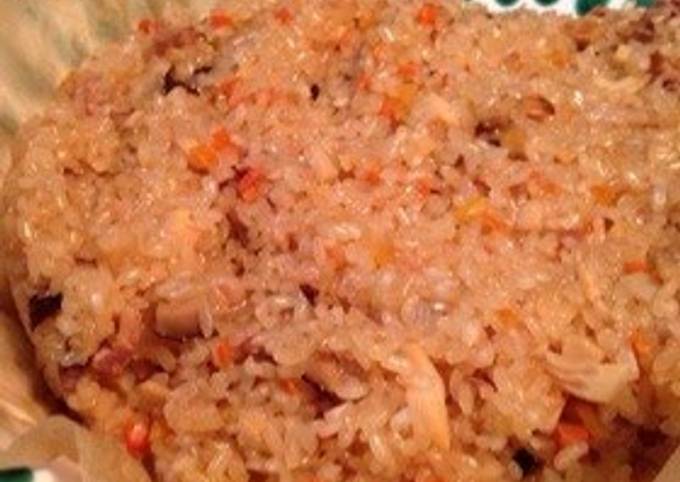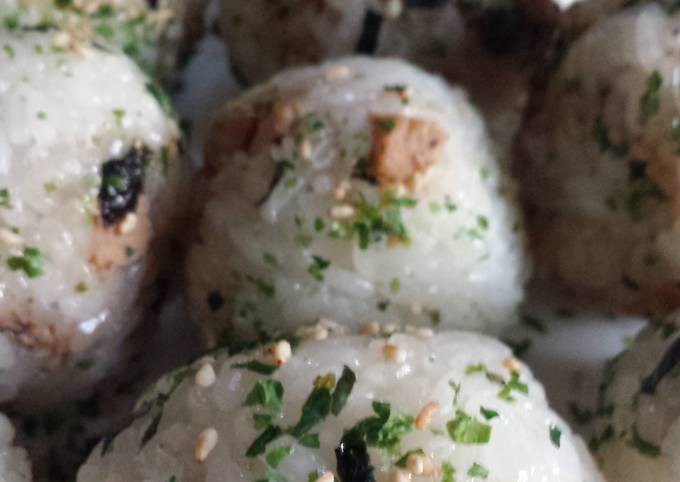
Hey everyone, it’s me again, Dan, welcome to my recipe page. Today, we’re going to prepare a distinctive dish, taiwanese sticky rice (ròu zòng). It is one of my favorites food recipes. For mine, I will make it a bit unique. This is gonna smell and look delicious.
Great recipe for Taiwanese Sticky Rice (Ròu Zòng). When my grandmother was a child, this used to be sold at a food stall in Taiwan very cheaply as a snack. Meanwhile, line a piece of damp kitchen towel in a bamboo steamer. Drain the presoaked rice before spreading it out evenly on the towel.
Taiwanese Sticky Rice (Ròu Zòng) is one of the most popular of current trending meals in the world. It’s easy, it’s quick, it tastes delicious. It is appreciated by millions daily. They are fine and they look fantastic. Taiwanese Sticky Rice (Ròu Zòng) is something which I have loved my entire life.
To begin with this particular recipe, we have to prepare a few ingredients. You can cook taiwanese sticky rice (ròu zòng) using 10 ingredients and 11 steps. Here is how you can achieve it.
The ingredients needed to make Taiwanese Sticky Rice (Ròu Zòng):
- Take 540 ml Mochi rice
- Make ready 100 grams Pork (pork off cuts or pork belly)
- Prepare 100 grams Cooked bamboo shoots
- Make ready 3 Dried shiitake mushrooms
- Prepare 8 cm Carrot (optional)
- Get Soup seasonings
- Get 2 tbsp Soy sauce
- Prepare 2 tbsp Sake
- Get 1 tsp Sugar
- Get 1 tsp Salt
Sticky rice bundles (粽子 Zongzi /dzong-dzrr/) are made from sticky or glutinous rice and a filling, which is kneaded in. They are then wrapped in bamboo leaves in pillow or triangular-based pyramid shapes, and tied with plant stems. If you are careful the bamboo leaves can be folded back like a wrapper so that you don't get your fingers (too) sticky while eating them. Zongzi ([tsʊ̂ŋ.tsɨ]; Chinese: 粽子; Pinyiin: zòng zǐ ) is a traditional Chinese food made of glutinous rice stuffed with different fillings and wrapped in bamboo, reed, or other large flat leaves.
Steps to make Taiwanese Sticky Rice (Ròu Zòng):
- Wash the mochi rice and drain.
- These are the ingredients except the mochi rice. Soak the dried shiitake in lukewarm water to rehydrate (you will be using the soaking water for the soup).
- Blanch the bamboo shoots and coarsely chop them. Coarsely chop the pork, carrot and rehydrated shiitake as well.
- Add water to the shiitake soaking water to make it to 2 cups (400 ml). Add the seasoning ingredients to make the soup.
- Heat vegetable oil (not listed) in a frying pan, stir-fry the pork, then add the bamboo shoots and carrot and stir-fry.
- Add the soup from Step 4, bring it to a boil, and transfer to a bowl.
- In the same frying pan, add the drained mochi rice, and stir-fry until it becomes whitish to evaporate the moisture from the rice. Don't let it burn!
- Once the moisture from the rice has evaporated, add the soup, and let the rice absorb the soup well.
- Add the other ingredients, and stir-fry to evaporate the moisture.
- Transfer to a steamer lined with parchment paper, and steam for 25 minutes over high heat.
- It's done!
If you are careful the bamboo leaves can be folded back like a wrapper so that you don't get your fingers (too) sticky while eating them. Zongzi ([tsʊ̂ŋ.tsɨ]; Chinese: 粽子; Pinyiin: zòng zǐ ) is a traditional Chinese food made of glutinous rice stuffed with different fillings and wrapped in bamboo, reed, or other large flat leaves. They are cooked by steaming or boiling. In the Western world, they are also known as rice dumplings or sticky rice dumplings. Zongzi (粽子, Chinese sticky rice dumpling) is a traditional food for celebrating Duanwu festival (端午节, aka Dragon boat festival) which is on the fifth day of the fifth month of the Chinese lunar calendar (The exact date varies on a regular calendar each year).
So that’s going to wrap it up with this special food taiwanese sticky rice (ròu zòng) recipe. Thank you very much for your time. I’m confident you can make this at home. There is gonna be more interesting food in home recipes coming up. Don’t forget to bookmark this page in your browser, and share it to your family, colleague and friends. Thanks again for reading. Go on get cooking!

